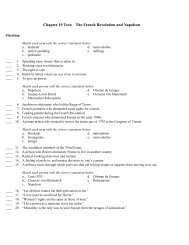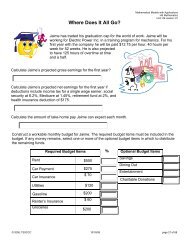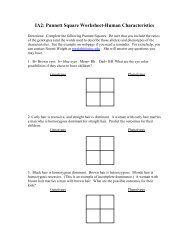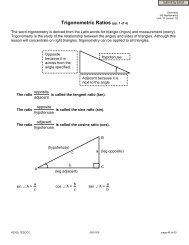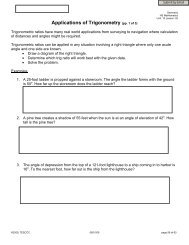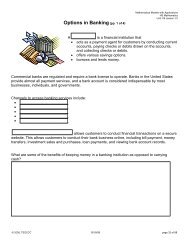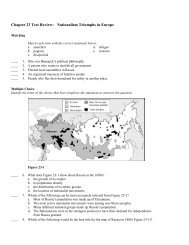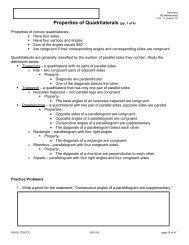Regular Polygons and Angle Relationships
Regular Polygons and Angle Relationships
Regular Polygons and Angle Relationships
You also want an ePaper? Increase the reach of your titles
YUMPU automatically turns print PDFs into web optimized ePapers that Google loves.
<strong>Regular</strong> <strong>Polygons</strong> <strong>and</strong> <strong>Angle</strong> <strong>Relationships</strong> (pp. 2 of 7)<br />
Geometry<br />
HS Mathematics<br />
Unit: 12 Lesson: 01<br />
7. Based on the data in your table, write a function for the interior angle sum of a polygon in<br />
terms of the number of sides of a polygon.<br />
8. What is the significance of the coefficient of the variable that represents the number of sides of<br />
the polygon in your function? Explain.<br />
9. Sketch a graph of the function in question 7.<br />
10. What is the domain <strong>and</strong> range of the function you graphed in question 8?<br />
11. Are there parts of the graph that do not represent the pattern generated by the data in the<br />
table? Explain. What is an appropriate domain <strong>and</strong> range given the context of the problem<br />
setting? Explain your reasoning.<br />
12. Use the function you wrote in question 7 to predict the interior angle sum for a 12 sided<br />
polygon.<br />
13. Use the function you wrote in question 7 to determine the type of polygon that has an interior<br />
angle sum of 1080.<br />
14. Is it possible to have a polygon with an interior angle sum of 2430? Why or why not?<br />
© 2008, TESCCC 12/03/08 page 22 of 49



